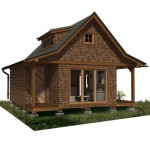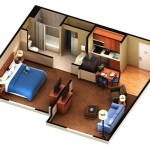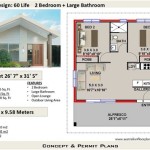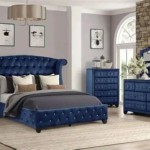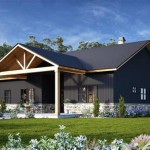How to Cool Down an Upstairs Bedroom
Maintaining a comfortable temperature in an upstairs bedroom can be a significant challenge, particularly during warmer months. Heat rises, which often results in upstairs rooms becoming noticeably hotter than those on the ground floor. Successfully cooling an upstairs bedroom requires a multifaceted approach, addressing factors such as ventilation, insulation, shading, and air conditioning. This article outlines effective strategies for reducing the temperature in an upstairs bedroom and creating a more pleasant living environment.
Optimize Ventilation
Ventilation plays a crucial role in regulating indoor temperature. Strategically opening windows and using fans can facilitate airflow, allowing cooler air to circulate and pushing warm air out. Understanding how to maximize natural ventilation can significantly impact the temperature of an upstairs bedroom.
The first step in optimizing ventilation is to identify the direction of prevailing winds. Opening windows on the windward side of the house (the side facing the wind) allows cooler air to enter the room. Conversely, opening windows on the leeward side (the side sheltered from the wind) allows warm air to escape. This creates a natural cross-breeze that can effectively cool the room.
Timing is also important. During the day, especially in the afternoon when temperatures are highest, it might be more beneficial to keep windows closed and blinds drawn to prevent hot air from entering. Open windows in the evening and early morning when the air is cooler. This allows the house to cool down overnight, reducing the heat buildup during the day.
Fans can be used to augment the natural ventilation process. A window fan placed facing outwards can exhaust hot air from the room, while a fan placed facing inwards can draw in cooler air. Ceiling fans, when rotating counterclockwise in the summer, create a downward draft that can provide a cooling sensation. Standing fans can also be strategically positioned to circulate air within the room, preventing stagnant pockets of warm air from forming.
Consider whole-house fans, which are installed in the ceiling and exhaust hot air from the entire house into the attic. These fans are particularly effective in climates with cool evenings, as they can rapidly cool the house down overnight. However, they require adequate attic ventilation to function properly, as the exhausted air needs to be able to escape easily.
Enhance Insulation and Shading
Insulation and shading are critical for preventing heat from entering the upstairs bedroom in the first place. Proper insulation minimizes heat transfer through the walls and roof, while shading reduces the amount of solar radiation that enters the room through windows.
Insulation acts as a barrier to heat flow, preventing heat from entering the house in the summer and escaping in the winter. Ensure that the attic is adequately insulated, as this is a primary pathway for heat gain in upstairs bedrooms. The recommended insulation level for attics varies depending on the climate, but generally, aim for an R-value of at least R-30. Types of insulation commonly used in attics include fiberglass batts, cellulose, and spray foam.
Wall insulation is also important, although it can be more challenging to add to existing walls. If the walls are hollow, it may be possible to blow insulation into them through small holes. Alternatively, adding insulation to the exterior walls during a renovation project can significantly improve energy efficiency and reduce heat gain.
Shading strategies reduce the amount of sunlight that enters the room through windows. This can be achieved through a variety of methods, including installing window coverings, planting trees, and using awnings or overhangs.
Window coverings such as blinds, shades, and curtains can effectively block sunlight. Blackout curtains are particularly effective at blocking light and heat, but even lighter-colored curtains can significantly reduce solar gain. Blinds and shades allow for more control over the amount of light that enters the room, as they can be adjusted to different angles.
Exterior shading is even more effective than interior shading, as it prevents sunlight from entering the room altogether. Trees planted strategically around the house can provide shade in the summer while still allowing sunlight to enter in the winter when the leaves have fallen. Awnings and overhangs can also provide shade, particularly for south-facing windows, which receive the most direct sunlight.
Window films can be applied to existing windows to reduce solar heat gain. These films are transparent or lightly tinted and can block a significant portion of the sun's energy without significantly reducing the amount of light that enters the room. Reflective window films are particularly effective at blocking heat, but they may reduce the amount of natural light.
Utilize Air Conditioning Strategically
While natural ventilation and insulation can significantly reduce the temperature in an upstairs bedroom, air conditioning may be necessary in particularly hot climates or during periods of extreme heat. Proper use and maintenance of air conditioning systems are essential for maximizing their efficiency and minimizing energy consumption.
The type of air conditioning system best suited for an upstairs bedroom depends on various factors, including the size of the room, the overall cooling needs of the house, and the budget. Window units are a common and relatively inexpensive option for cooling individual rooms. They are easy to install and remove, making them a flexible solution for seasonal cooling.
Portable air conditioners are another option for cooling individual rooms. They are similar to window units but have the advantage of being mobile. However, they typically require venting to the outside through a window, which can be less efficient than a properly installed window unit.
Ductless mini-split systems are a more permanent and energy-efficient option for cooling individual rooms. They consist of an outdoor compressor and an indoor air handler, which are connected by refrigerant lines. Mini-split systems are quiet, efficient, and can provide both cooling and heating.
Central air conditioning systems can cool the entire house, but they may not be the most efficient option for cooling only the upstairs bedroom. If the existing central air conditioning system is inadequate, it may be possible to upgrade it with a larger unit or add zoning to allow for independent control of the temperature in different areas of the house.
Regardless of the type of air conditioning system used, proper maintenance is essential for ensuring its efficiency and longevity. Regularly clean or replace the air filter to prevent dust and debris from clogging the system. Clean the coils of window units and mini-split systems to improve heat exchange. Schedule annual maintenance by a qualified HVAC technician to inspect the system and identify any potential problems.
Set the thermostat to a comfortable but energy-efficient temperature. Raising the thermostat by a few degrees can significantly reduce energy consumption without sacrificing comfort. Use a programmable thermostat to automatically adjust the temperature based on the time of day and occupancy patterns. For example, the temperature can be set higher when the room is unoccupied during the day and lower when occupied at night.
Supplementing air conditioning with fans can improve comfort and reduce energy consumption. A ceiling fan can help circulate the cool air produced by the air conditioner, allowing the thermostat to be set higher without sacrificing comfort. A standing fan can also be used to provide a localized cooling effect.
Consider using a dehumidifier in conjunction with air conditioning. Dehumidifiers remove moisture from the air, which can make the room feel cooler and more comfortable. This is particularly beneficial in humid climates. Reducing humidity also helps prevent the growth of mold and mildew.
By strategically combining ventilation, insulation, shading, and air conditioning, it is possible to effectively cool down an upstairs bedroom and create a more comfortable living environment. These strategies can also help reduce energy consumption and lower utility bills. Adapting the strategies to the specific characteristics of the house and climate is key to achieving optimal results.

Ac Not Cooling Upstairs Tips To Cool The Of Your Home

How To Keep Your Upstairs Cool During The Summer Wyckoff

What To Do If It S Hot Upstairs And Cold Downstairs Constellation

3 Things You Can Do Today To More Evenly Heat Your Home Hb Service Team

Ac Not Cooling Upstairs Tips To Cool The Of Your Home

Ac Not Cooling Upstairs Tips To Cool The Of Your Home

52 Impressive And Chic Loft Bedroom Design Ideas Digsdigs

15 Ways To Cool Down A Room Fast Constellation

The Ultimate Bed Cooling System Hot Sleeper Solution You Need Now All In Stripes

How To Fix A Hot Room In House Fixthisbuildthat

